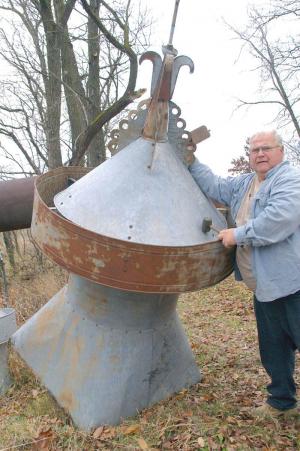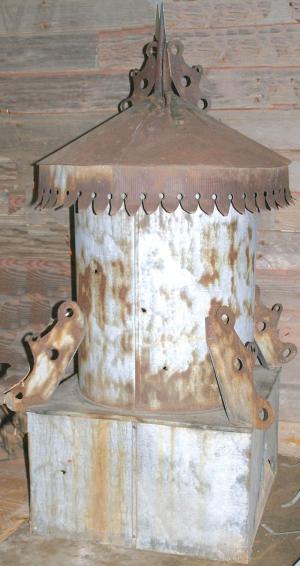2020 - Volume #44, Issue #4, Page #10
[ Sample Stories From This Issue | List of All Stories In This Issue | Print this story
| Read this issue]
He Collects And Sells Cupolas
 |
 |
“It’s amazing how well they worked without using electricity. I want to preserve as many as I can,” he says, standing amid cupolas scattered around his Albany, Minn., homestead.
“When farmers first started installing them on barns, it was because they didn’t have the equipment needed to dry hay in the field. It was often loaded into barns when it was still too moist,” Mayers says.
The barrel of a cupola acts like a vacuum that sucks moisture and air out of the hay stored in the barn’s loft. The taller it is the greater the drawing power. Some barns needed as many as 4 cupolas to get adequate ventilation. They were eventually replaced with electrical ventilation systems, though some architects add them to new barns and homes for architectural design and sometimes function.
Mayers has collected cupolas for 35 years after attending an auction where a $22 bid won two cupolas. At first he thought it was too much, but then recognized their historic significance, artistic designs, and that few people collect them. Since then he’s become a cupola advocate, paid up to $400 for one and bought, fixed up and sold many. For example, he sold 16 cupolas including 3 identical 12-ft. King cupolas to an Upper Michigan customer setting up a Pioneer Village on a farm with eight barns.
Mayers currently has about 50 cupolas including his biggest one - a 13 1/2 ft. LaCrosse cupola that was part of collection of weathervanes, lightning rods and two other cupolas he purchased. Some cupolas were purchased with sweat equity, like the one he and helpers chopped out with axes after a barn collapsed in a snowstorm. It was a lot of work, but it was worth saving the cupolas from being burned with the barn, Mayers says.
In taking down metal and wooden cupolas he learned firsthand how they were installed. Cheaper ones were cut to the right angle by carpenters and installed on the roof before it was shingled. Better-built cupolas were fit into the barn rafters. That made them sturdier in the wind, but harder to remove.
He invites folks interested in cupolas to contact him.
Contact: FARM SHOW Followup, Richard Mayers, Albany, Minn. (ph 320 845-2526; 320 333-2526 cell; weathervane@albanytel.com).

Click here to download page story appeared in.

Click here to read entire issue
To read the rest of this story, download this issue below or click here to register with your account number.




